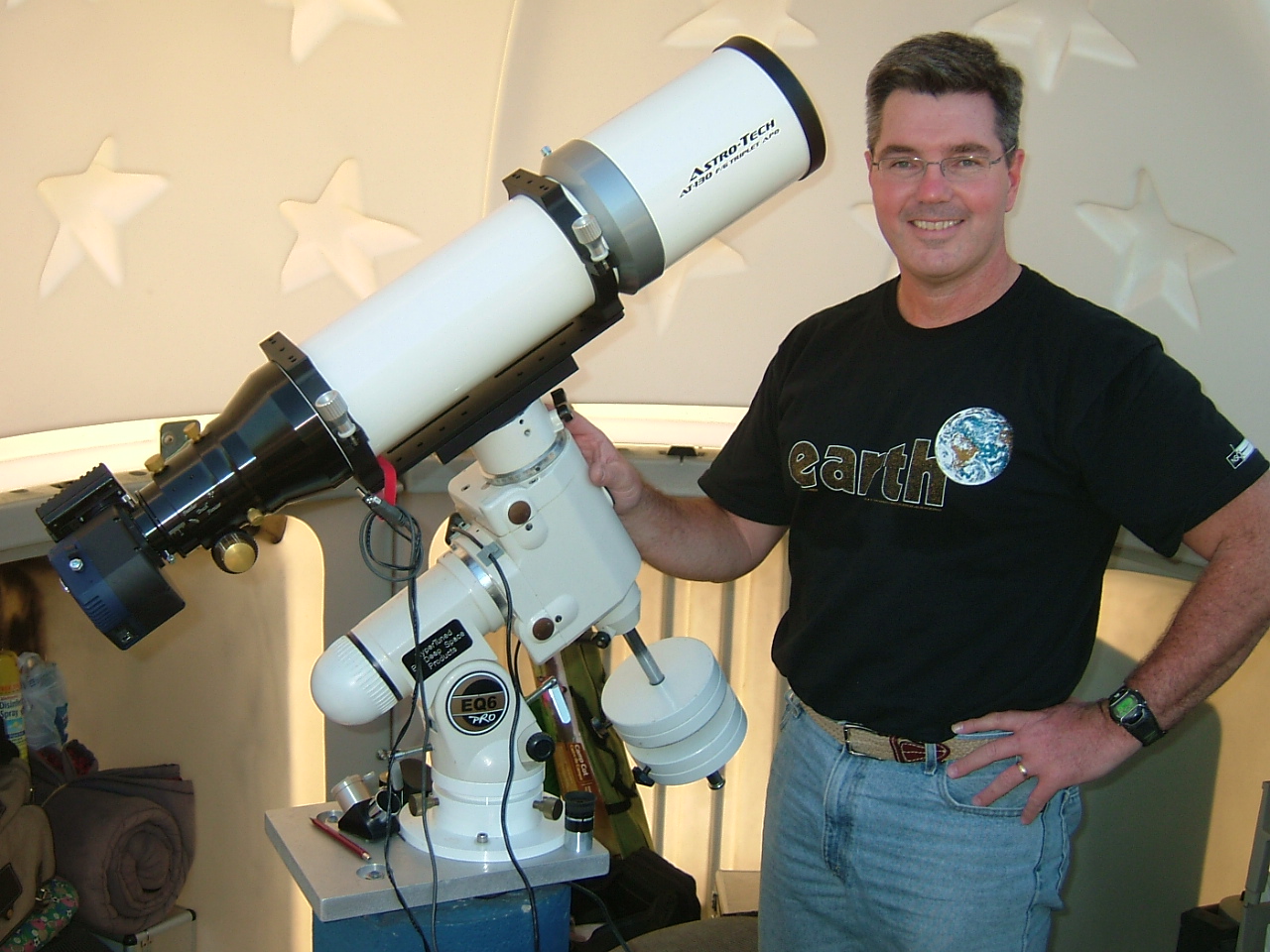…and not be disappointed.
Part II: The Telescope Tube
In part II of this story, we will address the optical tube, the telescope – the thing you put your eye in so as to see into space (stars, nebulae and galaxies, or near space, planets).
(If you missed Part I, you’ll want to go here before reading on.)
For amateur astronomy, consider that there are generally three types of telescopes: Refractors – made popular by Galileo (lens up front similar to a magnifying glass); Reflectors – invented by Sir Isaac Newton and still used today (single mirror that bounces light up to a diagonal mirror that lands the image onto your eye); and finally, combination, compound, or Catadioptric telescopes.
You cannot say that one is better than the others; it all depends on your observing needs, where you observe and what you want to do in the future.
Here goes a little explanation.

Refractor telescopes. Did you notice earlier that I didn’t write that Galileo invented this kind of scope? That’s because it was really invented by a Danish optician, Hans Lippershey.
According to NASA’s Jet Propulsion Lab (JPL) for which I serve as a Solar System Ambassador, Lippershey’s two little children were playing with lenses in his shop when one of the children looked at a weather vane on a nearby church through two lenses held together. The object became larger and clearer. The rest of the story is that Lippershey then put a tube in between the two lenses, thereby inventing one of the first telescopes.
This early model only magnified an image by 3 or 4 times. Lippershey applied for a patent in 1608 for his new invention.
The dark side of the story continues. In July of 1609, Galileo heard that Lippershey was on his way toVenice to sell his invention “that made distant objects seem near.” Galileo needed money, and the Venetians were offering Lippershey a high price for his device. In 24 hours, Galileo had a telescope made and sent word of “his invention” to a monk in a high office of the government. For this, Galileo received a raise in salary from 520 to 1000 florins per year. (Click here for more on that story).
These telescopes are either really inexpensive (avoid), or they can be moderately to extremely expensive. I have had all three types and as long as you know what you’re getting, it’s fine. The simple cheap refractor will be Achromatic and you will see purple around the bright stars. You can eliminate this with a simple “Fringe-Killer” purple filter. As long as you know this and it’s ok, this is a fine scope.
Next is the APOchromatic telescope. These are either ED (with two lenses) or fullyAPO with three or more lenses to correct the colors. The three or more lens scopes are very expensive.
Reflector telescope. In 1668 IsaacNewton, an English mathematician, built a reflector telescope that used a metal mirror to gather and focus light rays. Objects like planets and asteroids are so far away that all of the light rays coming from them reach the Earth as parallel rays. In the reflector telescope, one or more curved reflector mirrors focus those parallel lights rays to a single point. All modern research telescopes and large amateur ones are of the reflector type. The Dobson mounted telescope is actually a simple reflecting telescope. Today, amateurs refer to these telescopes as “Light Buckets” because large apertures (we refer to mirror or lens size as aperture) can be bought for relatively small amounts of money. Also, the reflector creates no unwanted color fringing.
So why doesn’t everyone want as big a reflector as possible? With size comes a challenge such as images not being as sharp or crisp as in a refractor. Also, in a place like the DFW metroplex with all our light pollution, you cannot appreciate the large aperture because you are collecting an equivalent amount of light pollution and dim, deep-sky objects are not visible. With these telescopes, we must constantly assure that the mirrors remain in alignment or “collimation”.
Catadioptric telescope. Also known as a “Cat,” this is a telescope that uses a combination of mirrors and lenses to increase the effective focal length of the telescope while allowing it to be folded into a more convenient and compact size. The use of a full-aperture correcting lens in these scopes virtually eliminates spherical aberration, chromatic aberration, and coma.
The simple Cassegrain telescope was first developed by Laurent Cassegrain in 1672. In 1944, Russian optician and astronomer Dmitri Maksutov invented a catadioptric telescope, the Maksutov telescope. A few years later, John Gregory, an employee of the technology company Perkin-Elmer, published the first designs for the Maksutov-Cassegrain in a 1957 issue of Sky & Telescope magazine for the use of other amateur astronomers. The commercial creation of the Maksutov-Cassegrain was to be reserved for Perkin-Elmer.
The most popular advanced telescope is the 10-11 inch SCT. I own a 10-inch Meade SCT and it’s a lovely telescope. Unfortunately, if you get into science or imaging there are several undesirable characteristics such as mirror flop, star-stretching and collimation challenges.
My telescope journey. My first “real” telescope was a Maksutov-Cassegrain, a tiny little Meade ETX-125. If you can find one of these on Astromart or Cloudy Nights used astronomy equipment forums, buy it. This telescope produced the sharpest stars I have seen with about a 5-inch aperture so it’s nearly the best of both worlds. This telescope traveled with me from coast to coast and suffered terribly for the miles of bouncing. However it lasted enough for me to capture some amazing planetary images with a tiny little webcam. This is where I got hooked on imaging.
Then I purchased a 10-inch Dobsonian for visual work. Then I purchased a 10-inch Schmidt-Cassegrain for serious imaging. Then I purchased an 80-mm short tube refractor to mount on top of the Schmidt Cassegrain to serve as a guide scope (plus it looked cool). Then I purchased a semi-APO refractor that got tons of use for many years.

Recently, I purchased a “telescope for the ages” at least for me. This is a 5-inch refractor with three lenses and an amazing focuser that I got for much less than it should have cost but it was still a princely sum. By now, I also have several very nice cameras to do different things and have built my own personal observatory where I have a permanent mount and telescopes. The observatory is in a very dark part of southeast Oklahoma.
In summary: Every good story needs a summary, and this one is no different. I’ll use a simple table to summarize the telescope mount story in part I.
Clear skies to you and yours and remember that the best telescope system is the one that you can use and enjoy the most.
- Part I: How to buy a telescope / the mount
- Earth’s recent encounter with an asteroid is closest in 200 years
- NASA launches Mars Science Lab




